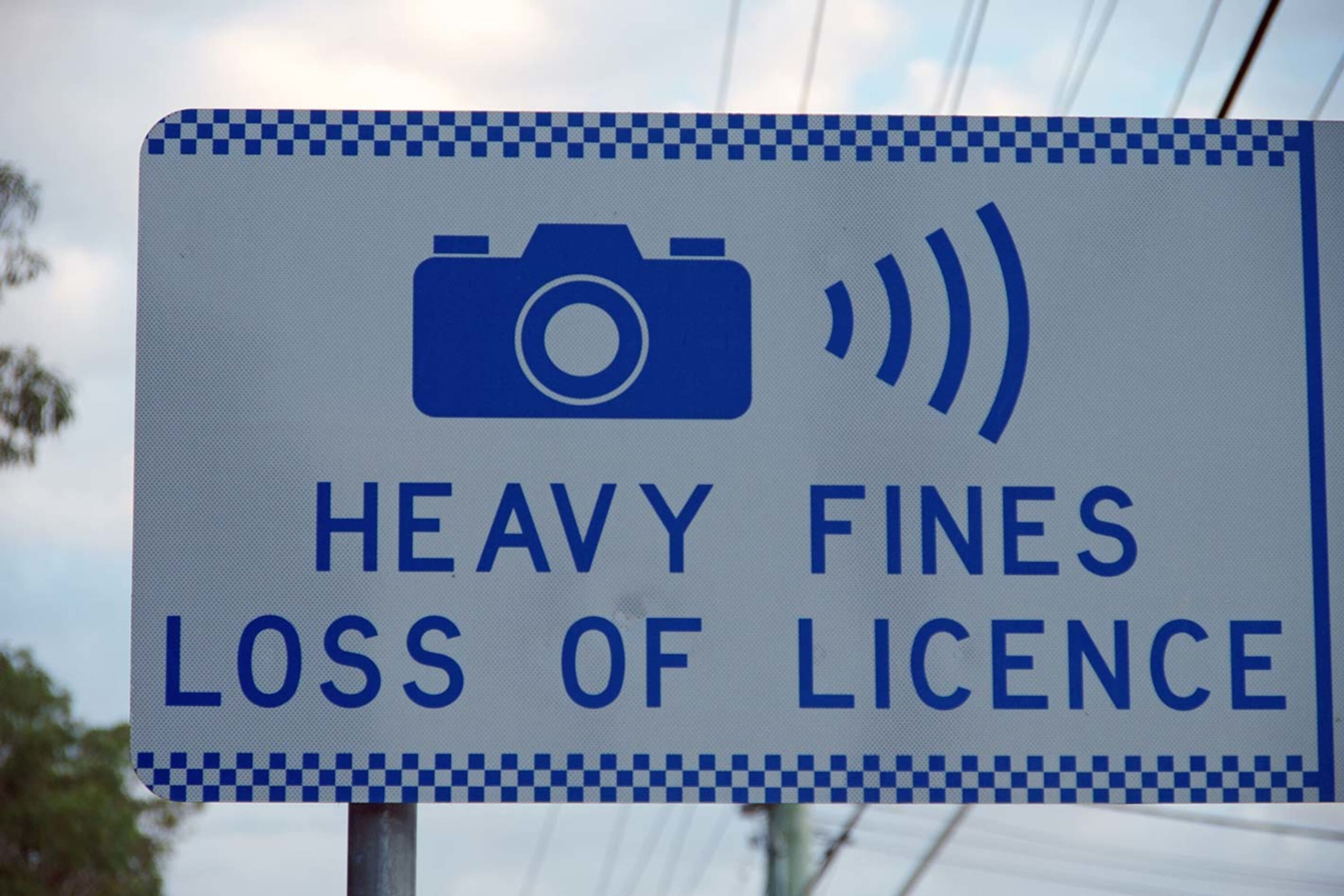
In recent years, average speed cameras have become a familiar sight on roads and highways across Australia.
These sophisticated traffic enforcement tools are designed not just to monitor speed at a single point but to calculate a vehicle’s average speed over a defined distance.
This technology represents a significant leap forward in efforts to enhance road safety, reduce accidents and encourage more responsible driving behaviours. A Monash University Accident Research Centre (MUARC) study found that Victoria’s fixed and mobile point-to-point systems effectively enhance road safety.

How do average speed cameras operate?
Average speed cameras, also known as point-to-point camera systems work by using several cameras placed at different spots along a road to monitor how fast cars are traveling over a certain distance.
When a car passes by the first camera, the system records the time and snaps a photo of the car’s license plate. As the car continues and passes more cameras, the system keeps track of the time and captures more photos.
Using technology to read the license plates from these photos, the system can track the car’s journey.

The goal is to calculate the car’s average speed between the cameras.
If the car travels the distance faster than what’s allowed– indicating it was speeding– the system flags this for further review and verification.
Essentially, these cameras work together to ensure cars maintain a legal speed over longer stretches of road by checking the time it takes to travel between points.

Which states and territories have these cameras?
Every Australian state and territory, apart from Tasmania and the Northern Territory, employs fixed point-to-point speed cameras. Tasmania’s Department of State Growth however, is looking to trial the systems in the near future [↗].
New South Wales stands out as the only region that utilises average-speed cameras exclusively for monitoring heavy vehicles, defined as those “with a Gross Vehicle Mass greater than 4.5 tonnes”. The state has over 30 speed camera sites, all which focus on heavy vehicle monitoring.
In Victoria, there are numerous stretches of road equipped with cameras across the Hume Highway and Peninsula Link.

South Australia has 36 cameras across several roads [↗], including the Port Wakefield Highway and Dukes Highway, among others.
Following a successful six-month trial [↗], Western Australia has deployed six mobile point to point cameras across the state.
The Australian Capital Territory maintains a single average speed camera setup on Hindmarsh Drive, with a sign 100 metres before each camera.

Will you get a fine from an average speed camera?
The short answer is yes, but it depends on your vehicle and state. When images from the point-to-point camera system are marked for review, they are examined by state police authorities.
If the examination determines that the images indeed capture a violation, an infringement will then be issued.
Much like standard speeding cameras, this could mean a fine, demerit points or even licence suspension.
However in states like NSW, only heavy vehicles are assessed by average speed cameras meaning you won’t be.

Can average speed cameras catch you on your phone?
While the primary function of average speed cameras is to measure the speed of a vehicle over a distance, some are also capable of detecting drivers using their mobile phones.
However, with advancements in camera technology and the integration of more sophisticated monitoring systems, some regions are experimenting with cameras that can detect illegal phone use among drivers.
These systems are distinct from average speed cameras but represent an evolving approach to road safety, targeting not just speeding but other dangerous behaviours behind the wheel.

Could an average speed camera check my vehicle registration?
Some average speed cameras are equipped with ANPR (automatic number-plate recognition) technology, which enable them not only to measure a vehicle’s speed over a given distance but also to check the registration status of a vehicle.
By capturing the license plate, these cameras can cross-reference the number with vehicle registration databases, identifying vehicles that are unregistered.
This dual functionality enhances the utility of average speed cameras beyond speed enforcement, contributing to broader efforts to ensure that all vehicles on the road are properly registered and compliant with legal requirements.
We recommend
-
 Advice
AdviceCan you check if you've been caught by a speed camera?
You've just experienced that sinking feeling that you may have been snapped by a speed camera. Is there a way to see if you'll actually be fined?
-
 News
NewsThree quarters of NSW mobile speed camera fleet grounded after signs reinstated
Up to three quarters of NSW’s mobile speed camera fleet is off duty until a solution can be found to fit warning signs in boots
-
 News
NewsNSW set to scrap speed camera warning signs
After claiming last year that warning signs would stay, NSW authorities could wind back the practice




